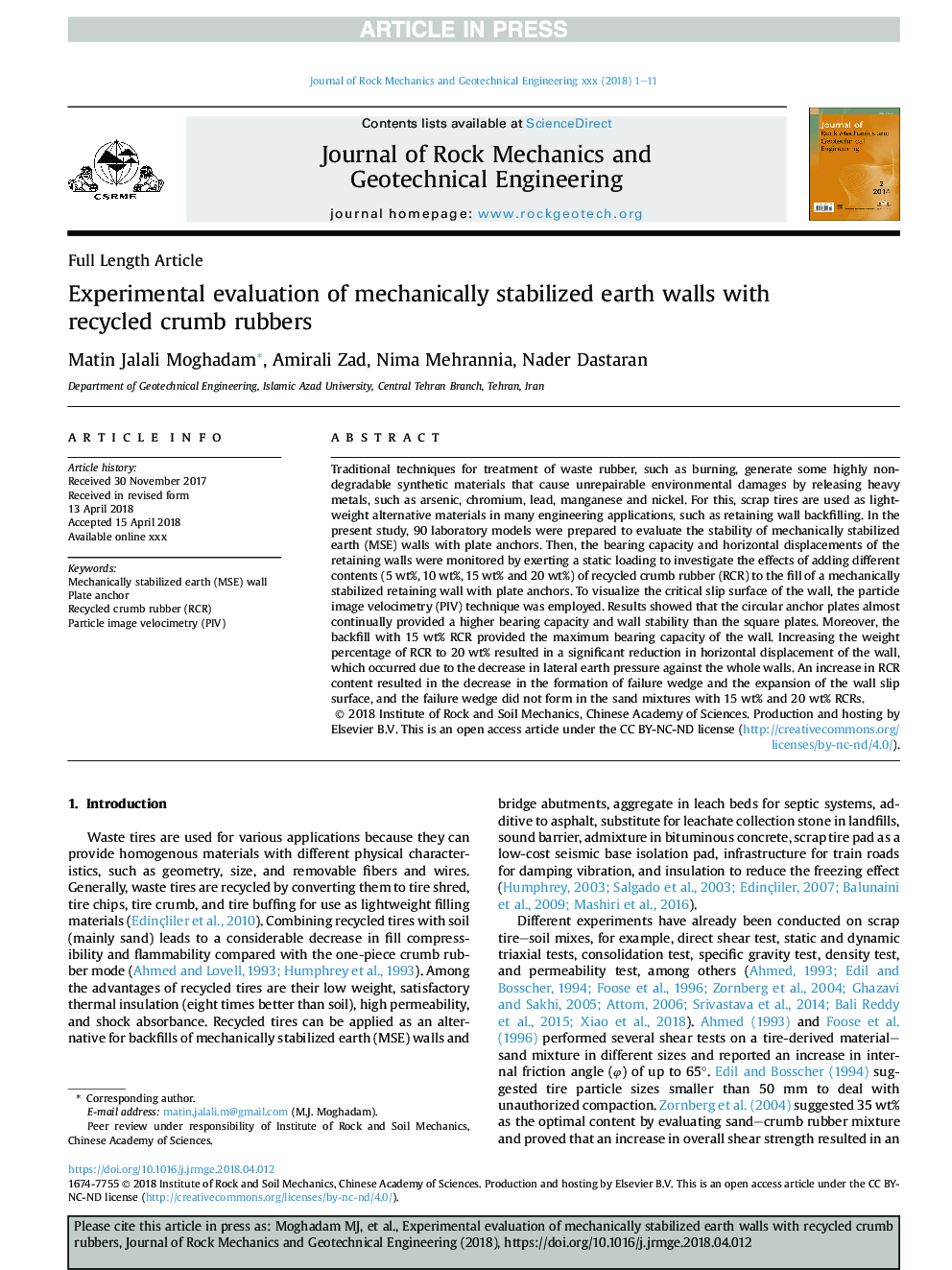| Article ID | Journal | Published Year | Pages | File Type |
|---|---|---|---|---|
| 11017533 | Journal of Rock Mechanics and Geotechnical Engineering | 2018 | 11 Pages |
Abstract
Traditional techniques for treatment of waste rubber, such as burning, generate some highly non-degradable synthetic materials that cause unrepairable environmental damages by releasing heavy metals, such as arsenic, chromium, lead, manganese and nickel. For this, scrap tires are used as lightweight alternative materials in many engineering applications, such as retaining wall backfilling. In the present study, 90 laboratory models were prepared to evaluate the stability of mechanically stabilized earth (MSE) walls with plate anchors. Then, the bearing capacity and horizontal displacements of the retaining walls were monitored by exerting a static loading to investigate the effects of adding different contents (5Â wt%, 10Â wt%, 15Â wt% and 20Â wt%) of recycled crumb rubber (RCR) to the fill of a mechanically stabilized retaining wall with plate anchors. To visualize the critical slip surface of the wall, the particle image velocimetry (PIV) technique was employed. Results showed that the circular anchor plates almost continually provided a higher bearing capacity and wall stability than the square plates. Moreover, the backfill with 15Â wt% RCR provided the maximum bearing capacity of the wall. Increasing the weight percentage of RCR to 20Â wt% resulted in a significant reduction in horizontal displacement of the wall, which occurred due to the decrease in lateral earth pressure against the whole walls. An increase in RCR content resulted in the decrease in the formation of failure wedge and the expansion of the wall slip surface, and the failure wedge did not form in the sand mixtures with 15Â wt% and 20Â wt% RCRs.
Related Topics
Physical Sciences and Engineering
Earth and Planetary Sciences
Geotechnical Engineering and Engineering Geology
Authors
Matin Jalali Moghadam, Amirali Zad, Nima Mehrannia, Nader Dastaran,
